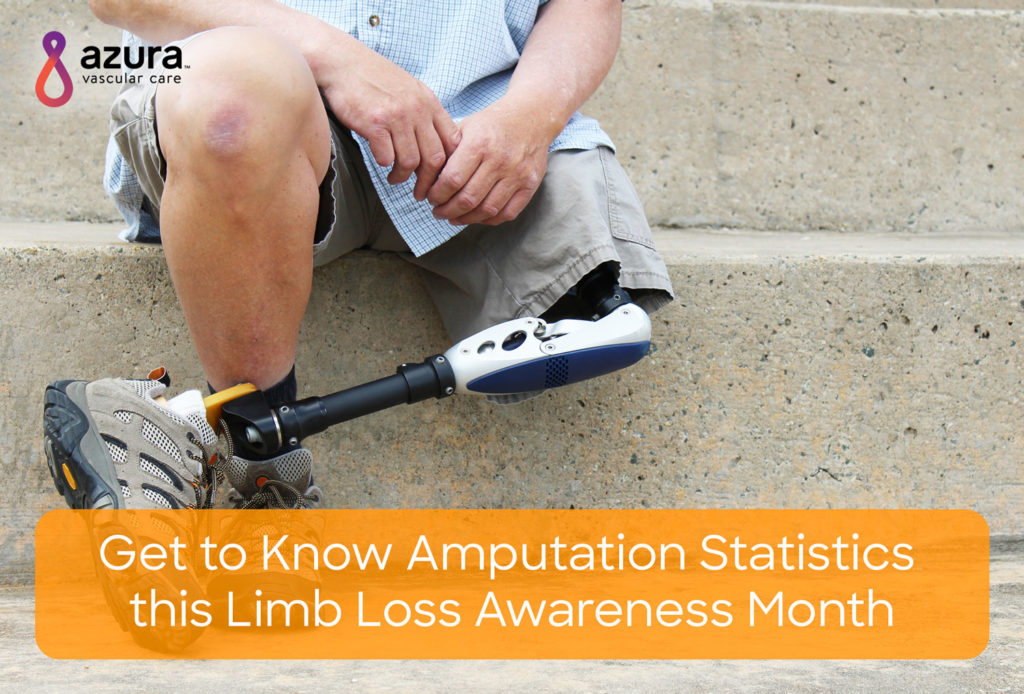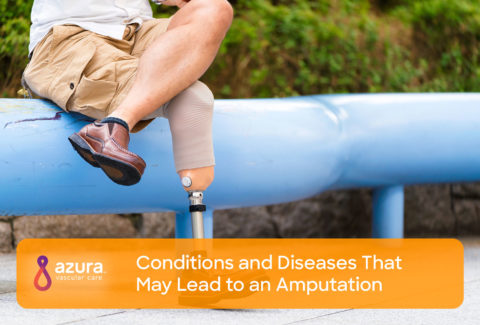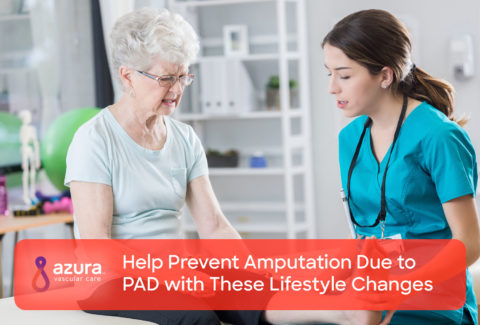
One in nearly 200 Americans is living with the loss of a limb and by 2050, 3.6 million people in the United States will be living with limb loss. i April is Limb Loss Awareness Month, which is meant to raise awareness of limb loss and to educate the public on measures that can help prevent amputation.
As much as severe injuries and grave accidents have contributed to amputation statistics, what many are not aware of is that such traumatic limb loss only accounts for 45 percent of amputations. Over half of all amputations are due to vascular disease. i
Amputation Due to PAD
What you really need to be aware of are the amputation statistics from non-violent causes.
- 54 percent of the estimated 1.6 million Americans with amputated limbs lost their limbs due to vascular conditions including peripheral artery disease (PAD) and diabetes. i
- Amputations due to peripheral artery disease and diabetes are projected to reach nearly 900,000 Americans by 2020. i
- The Amputee Coalition estimates that 60 percent of vascular-related amputations are preventable, which is why knowing the PAD risk factors is so important. ii
What Is PAD and Its Risk Factors?
PAD is a serious chronic condition that worsens over time if left untreated, making early detection of PAD critical. The most common PAD causes are poor health habits that lead to blockages or narrowing of the arteries in the limbs. Symptoms of PAD include mild to severe leg pain, changes in appearance of legs, and sores that do not heal.
Risk of PAD is much higher for people with diabetes and chronic kidney disease, obesity, people age 70 or older, or age 50 or older with a history of high blood pressure, high cholesterol, and smoking.
Steps You Can Take to Lower Your Risk of Amputation Due to PAD
Here is advice from the Mayo Clinic and American Heart Association for people managing peripheral artery disease:
 Stop smoking – If you smoke, quitting is the best thing you can do to reduce your risk of complications. The reason is tobacco smoke constricts blood vessels and damages your arteries. Stopping smoking will help slow the progression of your PAD. If you’re having trouble quitting on your own, ask your vascular specialist for help. People who participate in smoking cessation programs are far more likely to succeed in kicking the habit. Your doctor can also prescribe medications to help you quit.
Stop smoking – If you smoke, quitting is the best thing you can do to reduce your risk of complications. The reason is tobacco smoke constricts blood vessels and damages your arteries. Stopping smoking will help slow the progression of your PAD. If you’re having trouble quitting on your own, ask your vascular specialist for help. People who participate in smoking cessation programs are far more likely to succeed in kicking the habit. Your doctor can also prescribe medications to help you quit.
Exercise – Regular physical activity is an effective treatment for PAD symptoms. If leg or foot pain occurs when walking and keeps you from exercising, you may need to change your footwear. Studies show that footwear and/or orthotic devices can reduce pressure and strain on the foot and improve gait. (iii) If leg pain is the problem, your doctor may refer you to a claudication exercise rehabilitation program. Such programs will help you start slowly with leg exercises to ease symptoms and gradually build up your tolerance for physical exertion.
 Eat a healthy diet – Eating a heart-healthy diet will help lower your cholesterol levels, reduce saturated fat and help control your blood pressure, all of which contribute to atherosclerosis, the blood vessel disease that narrows arteries. A healthy diet can help you lose weight, which also reduces your risk.
Eat a healthy diet – Eating a heart-healthy diet will help lower your cholesterol levels, reduce saturated fat and help control your blood pressure, all of which contribute to atherosclerosis, the blood vessel disease that narrows arteries. A healthy diet can help you lose weight, which also reduces your risk.
Medications – Take your anti-cholesterol and blood pressure medications as prescribed by your doctor, as this is critical to reducing atherosclerosis and heart stress. DO NOT take over-the-counter cold remedies that contain pseudoephedrine (Advil® Cold & Sinus, Aleve-D® Sinus & Headache, Claritin-D®, Sudafed®, Tylenol® Cold, Zyrtec-D®, others) as these constrict your blood vessels and may increase your PAD symptoms.
See your doctor – If you have leg or other pain, particularly after physical exertion, it is important to tell your doctor, as early detection and diagnosis of PAD is key to slowing progression. Your doctor may refer you to a vascular specialist who specializes in treating the heart and circulatory system.
Prevention of Amputation Due to PAD
If you have been diagnosed with PAD, you can help lower your risk of limb loss due to vascular disease through education and regular examination by a vascular specialist. Education means knowing the symptoms of PAD as mentioned above, but it also means making changes to your lifestyle to prevent PAD progression. A good starting point is to get daily physical activity, lower your cholesterol and blood pressure, and stop smoking if you haven’t already done so.
Change your diet to include foods that are low in saturated and trans fat to lower cholesterol in conjunction with cholesterol-lowering medication.
Regular visits with a vascular specialist can help keep your condition in check, lowering your risk of the disease progressing.
The teams of vascular specialists and clinical staff at Azura Vascular Care have the expertise and resources to safely treat PAD. We specialize in offering treatment plans for each individual PAD patient to ensure the best possible outcome for you. If you would like to speak to a physician request an appointment online, or call us at 844-LEG-DOCS (534-3627).
Sources:
i Kathryn Ziegler-Graham, PhD, Ellen J. MacKenzie, PhD, et al. Estimating the Prevalence of Limb Loss in the United States: 2005 to 2050. Archives of Physical Medicine and Rehabilitation, March 2008, vol. 89, issue 3, pp 442-429. https://doi.org/10.1016/j.apmr.2007.11.005
ii April Is Limb Loss Awareness Month. https://www.amputee-coalition.org/limb-loss-resource-center/resources-filtered/resources-by-topic/limb-loss-statistics/prevention-statistics/.
iii Donovan J. Lott, Mary K. Hastings, et al. Effect of Footwear and Orthotic Devices on Stress Reduction and Soft Tissue Strain of the Neuropathic Foot. Clin Biomech (Bristol, Avon). 2007 Mar; 22(3): 352–359.


